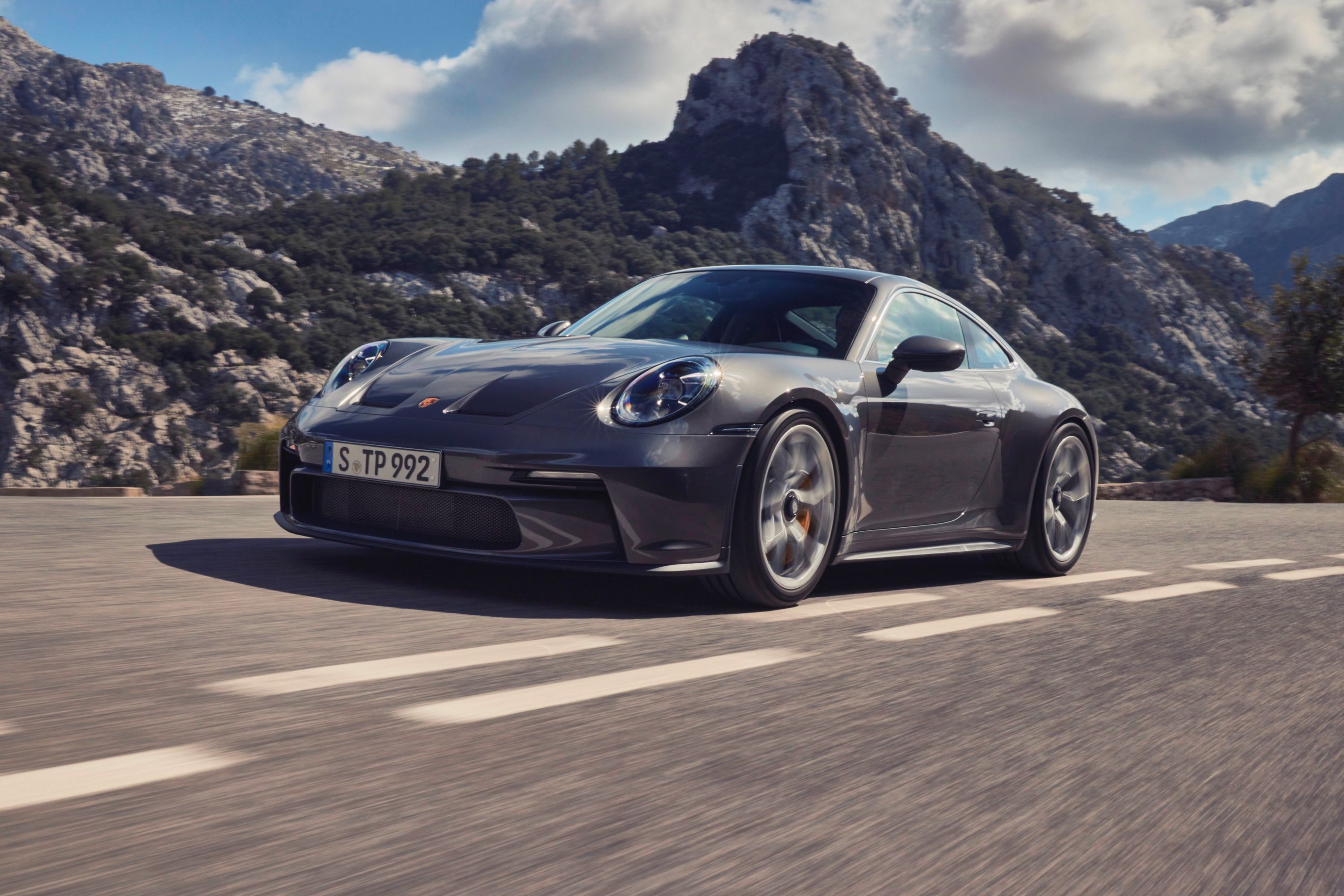
Few road cars garner the praise and adoration heaped upon the Porsche 911 GT3. It's not the most powerful car on the road, not by a long shot, but when it comes to driver involvement and corner-carving ability, the 911 has established itself as a market leader not just once, but six times over. The newest, seventh generation, freshly launched for 2022, aims to be nothing less than the pinnacle of driving pleasure. But in many ways, it's an even more pure sports car than any that has come before it.
The 911 GT3 has always been used as a road-legal racecar that can be enterest straight into GT3 racing classes, but never before in the hallowed badge's 23-year history has there been this much racing development. In a new interview with the legendary Walter Rohrl and Jorg Bergmeister, the pair of racing-turned-development drivers for Porsche explain just how focused the new model is.
It starts with the suspension and aerodynamics, with a double-wishbone front axle, swan-neck rear wing, and rear diffuser that are lifted almost verbatim from the Porsche 911 RSR - the GT factory race car that has won at Le Mans and elsewhere for the German marque. But arguably more important than these aspects is the engine and the noise it creates.
As one of the few remaining naturally-aspirated engines in the Porsche lineup, the 4.0-liter flat-six is based on the 911 GT3 R racing engine and is the same motor you'll find in the 911 GT3 Cup cars. It produces 502 horsepower and 346 lb-ft of torque and redlines at an astronomical 9,000 rpm.
For both Rohrl and Bergmeister, it's less about the power outputs it produces, however, and more about the noise it makes. Rohrl describes it as "exhilarating," before extolling that "no car lover can resist it." Bergmeister shares this sentiment, claiming that the 911 GT3 is not just an important car for current gearheads, but one that is producing the next generation of enthusiasts. "My three-year-old son always likes it when the sport exhaust system is activated."
Unlike other road cars, the 911 GT3's engine tech is developed through motorsport, and that's the way it's been for more than 20 years. "Over 20 years, practically all the advancements that were developed for the GT racing cars were adopted in the road car," notes Rohrl. It's not just the engine, but the chassis and weight-saving measures, too.
A carbon fiber-reinforced hood, extra-thin glass for the windows, forged alloy wheels, and even the brake rotors all contribute to saving weight. At a curb weight of 3,126 lbs with the six-speed manual transmission, the 2022 GT3 is almost as light as the first iteration was back in 1999.
Rohrl, who set the first sub-eight-minute Nurburgring lap with the original, finds this particularly impressive. "When I hear that the new GT3, which is much larger, and much more capable, essentially weighs just under [150 lbs] more than the first GT3, I can only doff my hat to a masterpiece of technology," he says.
This is despite new tech being added that would typically increase a modern car's weight, such as LED shift lights integrated into the dash - another piece of tech borrowed from Porsche's racing development - and a new track screen that displays essential track metrics like oil and tire pressures, temperatures, and fluid levels.
Rohrl, a two-time rally champion, has fond memories of 911 GT3 development through the years. He says that he "never would have thought that a series production car could lay down a sub-eight-minute lap on the Nordschleife," before managing the feat in 7:56.33 minutes. Since then, each generation has gone quicker, with the new model setting a 6:59.927-minute lap with Lars Kern behind the wheel.
For Rohrl, this means the GT3 keeps getting better, and in his eyes, the best 911 is "always the latest one - and the next one."
